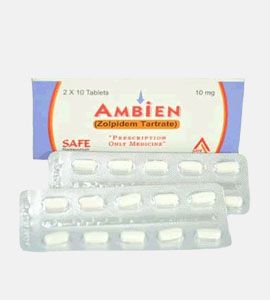Description
What is/are Eszopiclone?
Eszopiclone, marketed by Sepracor under the brand-name Lunesta, is a nonbenzodiazepine hypnotic which is slightly effective for insomnia. Eszopiclone is the active dextrorotatory stereoisomer of zopiclone and belongs to the class of drugs known as cyclopyrrolones.
Eszopiclone is a short-acting nonbenzodiazepine sedative-hypnotic. All clinical trials of eszopiclone published so far have been funded by the manufacturer of eszopiclone, Sepracor.
Medical uses
Eszopiclone is slightly effective in the treatment of insomnia where difficulty in falling asleep is the primary complaint. The benefit over placebo is of questionable clinical significance. Although the drug effect and the placebo response were rather small and of questionable clinical importance, the two together produce a reasonably large clinical response. It is not recommended for chronic use in the elderly.
Adverse effects
Eszopiclone has fewer anticholinergic side effects than racemic zopiclone. The following side effects may occur from the usage of eszopiclone (Lunesta):
Common side effects can include:
• unpleasant bitter or metallic taste
• headaches
• chest pain
• cold-like symptoms
• pain
• dry mouth
• daytime drowsiness
• lightheadedness
• dizziness
• upset stomach
• decreased sexual desire
• painful menstruation (periods)
• heartburn
• Breast enlargement in males
Less common side effects can include:
• rashes
• itching
• incoordination
• swelling of the hands, feet, ankles, or lower legs
• painful or frequent urination
• back pain
• neuropsychiatric adverse effects reported include;
• aggressive behaviour
• confusion
• agitation
• auditory and visual hallucinations
• worsening of depression
• suicidal thoughts
• depersonalisation
• amnesia
If a person does not sleep immediately after taking eszopiclone or if they get up shortly after taking the medication they may experience dizziness, lightheadedness, hallucinations (seeing things or hearing voices that are not there), as well as problems with coordination and memory.
Abuse
A study of the abuse potential of eszopiclone found that in persons with a known history of benzodiazepine abuse, eszopiclone at doses of 6 and 12 mg produced effects similar to those of diazepam 20 mg. The study found that at these doses which are two or more times greater than the maximum recommended doses, a dose-related increase in reports of amnesia and hallucinations was observed for both eszopiclone (Lunesta) as well as for diazepam (Valium).
Overdose
Eszopiclone is dangerous in overdose. Signs of eszopiclone overdose reported included dulled mental status, ST-elevation coronary vasospasm, treponema, ventricular fibrillation arrest and prolonged coma (lasting up to 48 hours).



